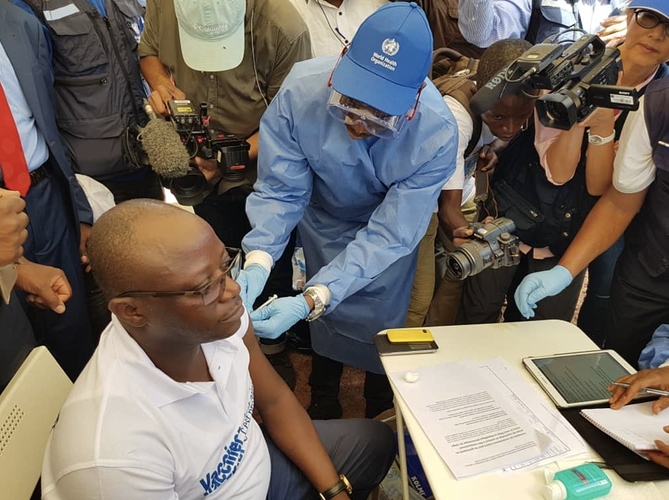At the London School of Hygiene & Tropical Medicine we have been using ODK to support the World Health Organization and Democratic Republic of the Congo Ministry of Health in their vaccination response to the current Ebola outbreak. The work aims to use a novel vaccine rVSV-ZEBOV-GP to halt transmission of the Ebola Virus and employs a ring vaccination strategy similar to the one that was used to eradicate the last pockets of smallpox in the 1970s. We have also been using the same system to support WHO and Ministries of Health in South Sudan, Uganda and Rwanda to pre-emptively vaccinate healthcare workers in case the virus crosses their shared borders with DRC.
In the first 315 days of the outbreak, around 135,000 people have been vaccinated as part of this effort and more than one million form submissions have been made to the LSHTM ODK servers by the vaccination teams. Data collection takes place using ODK off-grid to record an individual's vaccination as well as their follow-up visits as part of monitoring the vaccine efficacy and safety. Data are sent by mobile and satellite modem to ODK Aggregate, which feeds data in to R for downstream real-time analysis and reporting.
The LSHTM team has worked closely with members of the ODK community (special thanks to @ggalmazor, @LN and @yanokwa) to optimise the data collection platform for use at this scale - in particular, we've worked together on developments to ODK Briefcase which have massively reduced the time taken to download a dataset of this size.
The WHO has now released the initial findings of the vaccination effort. Almost all the data presented here were collected with ODK and are the result of the first 750,000 form submissions over about 220 days of the outbreak.
To briefly summarise the remarkable results, vaccination rings were defined by vaccinating all contacts of ebola cases, plus their contacts (contacts of contacts). This is a very effective way to use limited amounts of vaccine, which was the case here.
Around 94,000 individuals were vaccinated in 679 rings up to March 2019. Security issues (it's an active conflict zone) meant that rings could not be vaccinated around 175 cases of ebola, but case monitoring among individuals who should have been vaccinated in these ‘non-rings’ was still possible. In the 679 rings, there were just 71 cases of Ebola among vaccinated individuals. In the same period almost 900 cases occurred among contacts and contacts-of-contacts in the 175 non-rings. Estimated vaccine efficacy was between 95.8% and 98.5%. Within the 71 Ebola cases that occurred among vaccinated individuals, just 15 cases had onset of symptoms beyond 10 days post-vaccination (this is the time after which vaccine-induced protective immunity is assumed) and all of these individuals recovered. Severe security issues have hampered the response in the last few weeks and the outbreak is currently intensifying, but it does seem that rVSV-ZEBOV-GP has had significant impact on transmission. It may also reduce disease severity among vaccinees whom develop disease.
Credit : WHO AFRO
Whilst many infections have clearly been prevented by this work, the outbreak is a complex and difficult situation and even though the vaccine we've helped to evaluate has proven effective, the disease continues to spread. On 2019-06-11, the Ugandan Minister of Health confirmed that cases of ebola had been detected in Uganda. Ring vaccination will start there immediately in an attempt to stop ebola spreading in a second country.
We would like to extend our thanks to all members of the ODK community for their help, support, advice and direct code contributions to this work.
Data saves lives.
